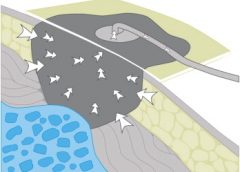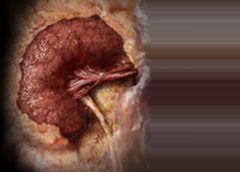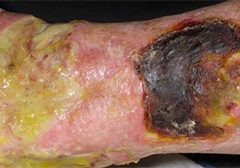http://www.sciencedaily.com/releases/2014/05/140512101257.htm
Read MoreSearch Results for: w
Successful documentation of wound care
By Cheryl Ericson, MS, RN, CCDS, CDIP
Providers are often surprised at how pages upon pages of documentation in a patient’s health record can result in few reportable diagnosis and/or procedure codes, which often fail to capture the complexity of the patient’s condition. However, providers need to be aware of the implications of coding. As healthcare data become increasingly digital through initiatives such as meaningful use, coded data not only impact reimbursement but also are increasingly used to represent the quality of care provided. Here’s a closer look at how documentation and coding work in the context of wound care. (more…)
Read MoreWhat is a comprehensive risk assessment?
By Jeri Lundgren, BSN, RN, PHN, CWS, CWCN
Prevention of pressure ulcers and skin breakdown begins with a comprehensive risk assessment. Most providers use a skin risk assessment tool, such as the Braden or Norton scale. While these tools have been validated to predict pressure ulcer development, their use alone isn’t considered a comprehensive assessment, and frequently the individual risk factors they identify aren’t carried through to the plan of care. (more…)
Read MoreClinician Resources: Patient Safety, Ostomy, Wound Management
This issue’s resources include patient tools and new guidelines.
Improving patient safety
Research suggests that adverse events affect patients with limited English proficiency (LEP) more frequently, are commonly caused by communication problems, and are more likely to result in serious harm compared to adverse events affecting English-speaking patients. Your hospital can take steps to reduce risks of adverse events for patients with LEP with “Improving patient safety systems for patients with limited english proficiency: a guide for hospitals,” from The Disparities Solutions Center, Mongan Institute for Health Policy at Massachusetts General Hospital, Boston, and Abt Associates, Cambridge, Massachusetts. (more…)
Read MoreBacteria living on skin may affect how wounds heal
Minor foot wounds a major threat for diabetics
NAWCO News
A letter from one of our own
I am writing this letter to share the sense of honor and privilege I felt in working with the National Alliance of Wound Care and Ostomy (NAWCO) to organize the first Eastern Region WCC Conference during the Fall of 2013. What an experience! In addition to representing a top-notch organization, I increased my knowledge of wound care and its products dramatically and met many amazing clinicians on the same journey.
Traveling from seven states and a wide variety of care settings, nearly 100 wound care clinicians came together with the common goal of enhancing their ability to make a difference in the lives of their patients. We launched the process of forming a vital clinician network that will allow us to share product and procedure information and experiences, leverage the information in our individual care settings, and strengthen the wound care knowledge of our peers.
Throughout this experience, I talked with dozens of local wound care product representatives. Like the clinicians, they provided a wealth of wound care insights. I encourage clinicians to reach out to these “best friends” of wound care and take advantage of their depth of knowledge.
I am passionate about advocating proper wound care, and if I can help disseminate wound treatment knowledge to other clinicians in support of their patients, I need no better reward.
Finally, the opportunity to represent NAWCO filled me with pride because of the respect I have for its vision. I believe in the importance of continuing education, furthering knowledge, and ensuring expertise through a certification process that is based on solid, research-based wound care. My hope is to represent NAWCO in the future.
Thank you for this exciting opportunity!
Sincerely,
Janie Hollenbach, RN, WCC, OMS,
DAPWCA, FACCWS
NAWCO names new executive director
The National Alliance of Wound Care and Ostomy (NAWCO), the largest wound care and ostomy certification organization in the United States, is pleased to announce that Cynthia (Cindy) Broadus, RN, BSHA, LNHA, CLNC, CHRM, WCC, DWC, OMS, was named executive director effective February 1, 2014.
Ms. Broadus brings a wealth of experience and knowledge to the organization. She has excelled for over 2 decades in specialty nursing care, litigation, corporate management, and company development. She joins the organization at a time of exciting change and will be instrumental in achieving accreditation that will provide national and international recognition for NAWCO.
“I am excited to be a part of such a great organization and supporting the efforts of the close-knit community that makes up the NAWCO certificants,” Ms. Broadus says.
Read the full press release.
DISCLAIMER: All clinical recommendations are intended to assist with determining the appropriate wound therapy for the patient. Responsibility for final decisions and actions related to care of specific patients shall remain the obligation of the institution, its staff, and the patients’ attending physicians. Nothing in this information shall be deemed to constitute the providing of medical care or the diagnosis of any medical condition. Individuals should contact their healthcare providers for medical-related information.
Read MoreGuidelines for safe negative-pressure wound therapy
By Ron Rock MSN, RN, ACNS-BC
Since its introduction almost 20 years ago, negative-pressure wound therapy (NPWT) has become a leading technology in the care and management of acute, chronic, dehisced, traumatic wounds; pressure ulcers; diabetic ulcers; orthopedic trauma; skin flaps; and grafts. NPWT applies controlled suction to a wound using a suction pump that delivers intermittent, continuous, or variable negative pressure evenly through a wound filler (foam or gauze). Drainage tubing adheres to an occlusive transparent dressing; drainage is removed through the tubing into a collection canister. NWPT increases local vascularity and oxygenation of the wound bed and reduces edema by removing wound fluid, exudate, and bacteria. (more…)
Read MoreAchieving a work-life balance
By Julie Boertje, MS, RN, LMFT, QMRP, and Liz Ferron, MSW, LICSW
Almost everyone agrees that achieving a work-life balance is a good thing. Without it, we risk long-term negative effects on our physical and mental health, our relationships, and our work performance. But many clinicians have a hard time achieving this balance due to job demands, erratic work schedules, or the inability to say no when someone asks for help.
The challenges of stress and burnout
Stress and job burnout can cause, contribute to, or result from a poor work-life balance. They disrupt our normal patterns, behaviors, and feelings.
Of course, no one can escape stress altogether. Sometimes stress is a good thing, but we need to be able to identify when it’s a problem. For many clinicians, stress springs from the desire to provide good service and care in all parts of their lives. This desire can create stress, especially when barriers exist to achieving it. (more…)
Read MoreClinical Notes: Low BMD, CKD, hypoglycemia, HBOT
Low BMD common after ostomy
Low bone mineral density (BMD) is common in patients with inflammatory bowel disease who have a stoma placed, according to “Frequency, risk factors, and adverse sequelae of bone loss in patients with ostomy for inflammatory bowel diseases,” published in Inflammatory Bowel Diseases. (more…)
Read MoreBecoming a wound care diplomat
By Bill Richlen, PT, WCC, CWS, DWC, and Denise Stetter, PT, WCC, DCCT
The Rolling Stones may have said it best when they sang, “You can’t always get what you want,” a sentiment that also applies to wound care. A common frustration among certified wound care clinicians is working with other clinicians who have limited current wound care education and knowledge. This situation worsens when these clinicians are making treatment recommendations or writing treatment orders not based on current wound-healing principles or standards of care. (more…)
Read MoreHow to assess wound exudate
By Nancy Morgan, RN, BSN, MBA, WOC, WCC, DWC, OMS
Each issue, Apple Bites brings you a tool you can apply in your daily practice.
Exudate (drainage), a liquid produced by the body in response to tissue damage, is present in wounds as they heal. It consists of fluid that has leaked out of blood vessels and closely resembles blood plasma. Exudate can result also from conditions that cause edema, such as inflammation, immobility, limb dependence, and venous and lymphatic insufficiency.
(more…)






